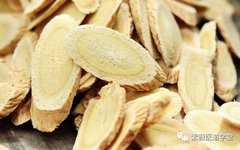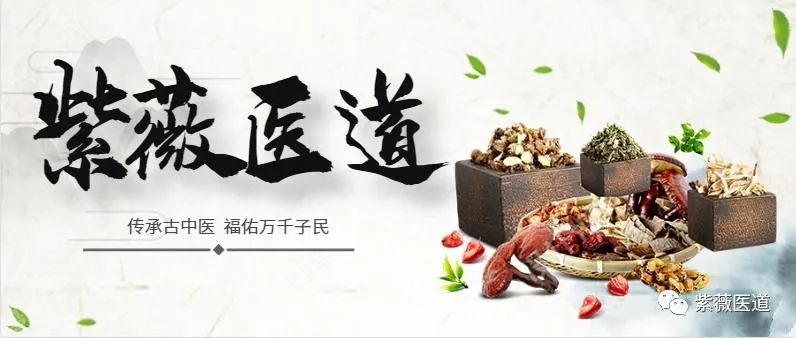
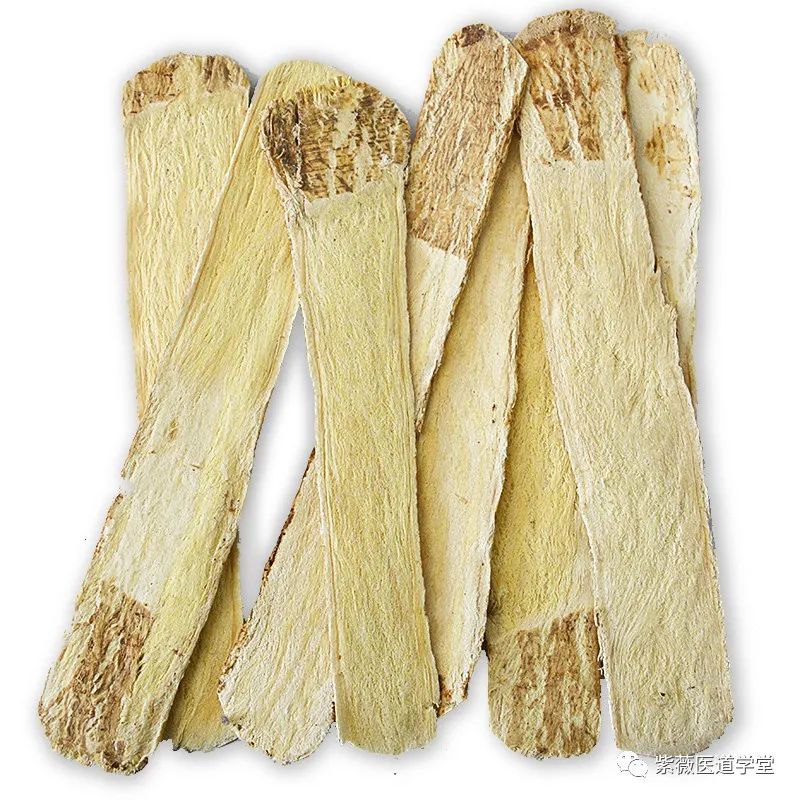
1
Huang Qi (Astragalus), used raw to solidify the exterior, can induce sweating when there is no sweat, and can stop sweating when there is sweating. It warms and distributes the flesh, strengthens the pores, drains Yin fire, and relieves muscle heat; used roasted to tonify the center, benefits Qi, warms the San Jiao (Three Burners), and strengthens the spleen and stomach.
2
In Zhang Zhongjing’s formulas, Huang Qi is indicated for water in the muscle layer, thus it can treat yellow sweat, night sweats, and skin edema, and it can also treat body swelling or numbness, as swelling and numbness are both conditions of water in the muscle layer.
3
The Shen Nong Ben Cao Jing states that Huang Qi is the main herb for major wind, as it can expel external wind when used with herbs that release the exterior, and when used with herbs that nourish Yin and clear heat, it can extinguish internal wind.
4
When used with Ren Shen (Ginseng), the roles must be distinguished.
For internal damage to the spleen and stomach, with fever and aversion to cold, lethargy, vomiting, diarrhea, and distension, with a thin and weak pulse, Ren Shen is the monarch, and Huang Qi is the minister;
If there is exterior deficiency with spontaneous sweating and night sweats, leading to loss of Yang, and various ulcers consuming pus and blood, or in cases of infantile rashes not fully developed, all diseases of Yin toxicity that do not arise, treatment must also solidify the Wei (defensive Qi) and protect the Ying (nutritive Qi), with Huang Qi as the monarch and Ren Shen as the minister.
5
One should weigh the heat power of Huang Qi against the cold power of Zhi Mu (Anemarrhena), and there is no bias; equal parts can be used for long-term consumption without excess heat or cold.This discussion is for decoctions; when made into pills, the cold power of Zhi Mu is stronger than the heat power of Huang Qi.
6
One should weigh the tonifying power of Huang Qi against the breaking power of San Leng (Sparganium) and E Zhu (Curcuma), and equal parts can be used without bias.
When using San Leng and E Zhu each at 9 grams to treat accumulations in the internal organs, fearing damage to Qi, Huang Qi at 18 grams can be added, and after taking several doses, the disease resolves without harming the Qi, and there are cases of becoming stronger with continued use.
In the past, when encountering someone very deficient, after taking a few doses, they felt their Qi could not support them, and it was necessary to increase Huang Qi or reduce San Leng and E Zhu to continue taking it. For those extremely deficient, tonifying herbs are difficult to work, while breaking herbs can easily cause excess.
If the person has strong Qi but also has stagnation, it is necessary to use more San Leng and E Zhu or use less Huang Qi before taking it to avoid fullness and discomfort.
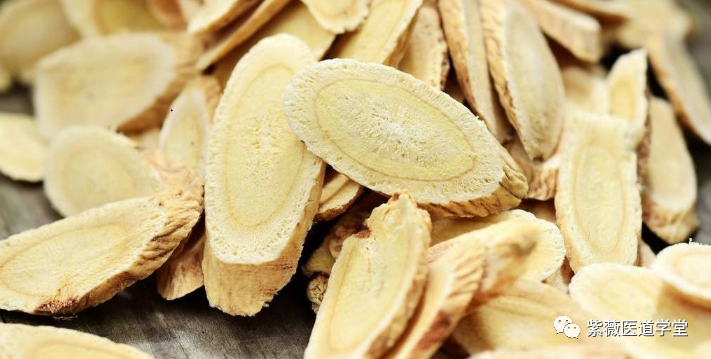
7
Huang Qi used with Ren Shen benefits Qi; with Dang Gui (Angelica) it tonifies blood, allowing Yang to generate Yin; with Bai Zhu (Atractylodes) and Fang Feng (Siler) it moves spleen dampness; with Fang Ji (Stephania) and Fang Feng it expels wind-damp; with Gui Zhi (Cinnamon Twig) and Fu Zi (Aconite), it treats Wei deficiency with loss of Yang and unceasing sweating, serving as the general for the opening and closing of the pores.
It is also said that this herb combined with Ren Shen and Gan Cao (Licorice) can reduce fatigue and fever; combined with Bai Zhi (Angelica Dahurica) and Lian Qiao (Forsythia), it can expel pus, relieve pain, and disinfect; with Chuan Lian (Coptis), it treats intestinal wind and blood in the stool; with Bai Zhu, it can stop spontaneous sweating; with Ge Gen (Kudzu), it can raise the original Qi.
8
Huang Qi solidifies the exterior and benefits Wei, and when combined with Fang Feng, which is good at moving and dispersing, they complement each other, enhancing their effects. Thus, using Huang Qi does not worry about solidifying pathogens, and using Fang Feng does not worry about dispersing the exterior; this is a combination of dispersing and tonifying, nourishing internally while also venting.
9
In the Yu Ping Feng San (Jade Windscreen Powder), Huang Qi and Fang Feng should not be used in equal parts; use Huang Qi at 70% and Fang Feng at 30% for optimal results.
10
Huang Qi tonifies the Qi of the upper burner, and when paired with Di Gu Pi (Lycium Bark), which is bitter and cold, it tonifies Qi without tonifying fire.
11
For some patients in shock or severe heart failure, sweating profusely, needing to change clothes several times a day, and extremely fatigued, in such critical conditions, one can use Huang Qi 60-120 grams, decocted once; for severe cases, it can be taken twice a day. Most often, within 1-2 days, the profuse sweating stops, and the critical situation is resolved.
In such critical conditions, using Ren Shen 15 grams, decocted once, can also be effective, but not as effective as Huang Qi, which can both benefit Qi and solidify the exterior to stop sweating.
12
For those with continuous colds in winter that do not resolve, one can use raw Huang Qi stewed with yellow chicken.Use 60 grams of Huang Qi for one chicken, gradually increasing; if the stomach is strong, Huang Qi can be increased to 180 grams, and take until the beginning of spring. This method is effective for preventing colds and improving constitution.
13
Whenever encountering weak liver Qi that cannot be regulated, if all liver tonics are ineffective, use Huang Qi as the main herb, and add a small amount of Qi-regulating herbs, and after taking, one can see results almost immediately.
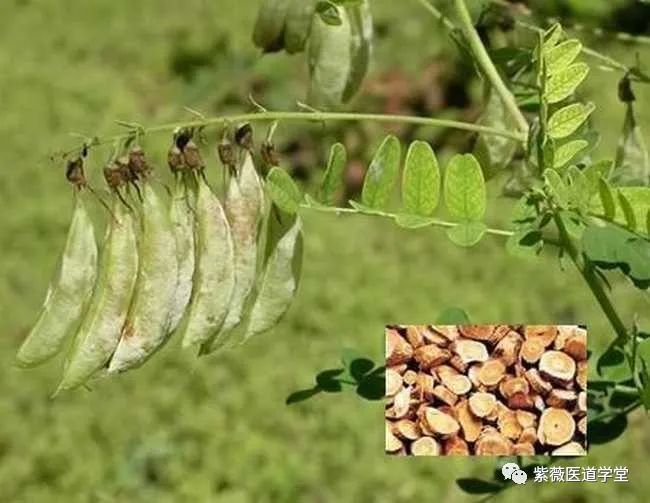
14
For treating liver cirrhosis with middle Qi deficiency, use Huang Qi 15-30 grams and Bai Zhu 30-60 grams, taking the meaning of “block and use”, which can prevent hepatic coma, and can enhance the function of blood-activating and stasis-resolving herbs.
15
For hypertension, Huang Qi must show signs of Qi deficiency, such as a thin and soft pulse, a plump and tender tongue with tooth marks, with a dosage of 40-60 grams being appropriate.
If there is also liver Yang rising, it is often combined with Gan Cao, Bai Ji Li (Tribulus), and Gou Teng (Uncaria); if there is kidney Yang deficiency, it is often combined with Er Xian Tang (Two Immortals Decoction). Long-term use of Huang Qi must be paired with Qi-regulating herbs to avoid stagnation of Qi; if Qi deficiency is accompanied by fire stagnation, it is necessary to add herbs to clear heat according to the symptoms.
16
Huang Qi lightly raises blood pressure, but heavily lowers it.
To treat Qi deficiency with phlegm-damp type hypertension, Huang Qi can be combined with Wen Dan Tang (Warm the Gallbladder Decoction), where Huang Qi must be used in a dosage of over 30 grams for good effect. However, it is contraindicated for hypertension due to liver Yang rising or internal heat.
17
Huang Qi treats cardiovascular and cerebrovascular diseases; for patients with fluctuating or high blood pressure, it can be combined with equal or small amounts of Chuan Niu Xi (Achyranthes) to guide Yang, heat, blood, and water downward.
18
Huang Qi treats severe diabetes and proteinuria, with a common dosage of 30 grams, and high doses can be 60-90 grams, as Huang Qi can solidify the pores, preventing the leakage of urine sugar and protein, and only with a large enough dosage can it be effective.
19
Huang Qi combined with Fang Ji, Fang Feng, Bai Zhu, Fu Ling, and Hong Hua (Carthamus) treats kidney disease with edema; combined with Tai Zi Shen (Pseudostellaria), Bai Zhu, Zhi Jiang Can (Silkworm), Quan Xie (Scorpion), and Guang Di Long (Earthworm) treats kidney disease with proteinuria; combined with Tai Zi Shen, Zhi Cang Zhu (Atractylodes), Yi Yi Ren (Coix), Sang Ji Sheng (Mulberry Mistletoe), Ze Xie (Alisma), Yi Mu Cao (Leonurus), Liu Yue Xue (Lysimachia), and Zhi Da Huang (Rhubarb) treats kidney insufficiency.
In cases of nephrotic syndrome with “three highs and one low”, massive proteinuria, hypercholesterolemia, severe edema, and low protein levels, especially with a significant drop in albumin, using large doses of Huang Qi and Dang Gui each at 30-50 grams, and large doses of Bai Shao (Paeonia) and Gou Qi Zi (Goji) each over 30 grams, combined with 10 grams of Zi He Che (Placenta), can improve plasma albumin and alleviate anemia.
Additionally, daily use of Huang Qi injection 20-30 milliliters added to 250 milliliters of 10% glucose solution for intravenous drip, for 15 days as one treatment course, is effective in reducing urine protein.
20
Huang Qi at 15-30 grams has significant diuretic effects; at 50-60 grams, urine output may decrease.Thus, for elderly patients with Qi deficiency who do not take in enough fluids, with frequent urination or clear, prolonged urination at night, it is often necessary to use 30-50 grams.
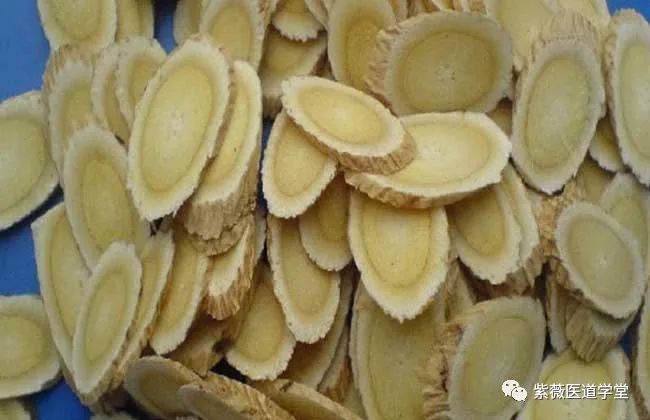
21
Qi and Yin deficiency is an important pathological mechanism in the onset of hyperthyroidism.
Through extensive clinical observation, fatigue, spontaneous sweating, and loose stools belong to Qi deficiency; dry mouth, irritability, palpitations, tremors, and excessive hunger belong to Yin deficiency with heat; thyroid enlargement and nodules belong to phlegm stagnation and Qi stagnation, thus it is advisable to adopt a treatment principle of benefiting Qi and nourishing Yin as the main approach, with phlegm transformation and Qi regulation as the adjunct.
In treatment, special attention should be paid to the aspect of spirit and Qi, as Qi can generate fluids and also move fluids, through tonifying Qi to assist in generating Yin fluids, which is the meaning of “seeking Yin within Yang”. Huang Qi, as the premier Qi tonifying herb, can be used as the monarch herb, but it must be used in large amounts, over 60 grams for good effect.
22
In surgery, Huang Qi should be used raw. Combined with Jin Yin Hua (Honeysuckle) and Lian Qiao, it supports the righteous and detoxifies; combined with Jie Geng (Platycodon) and Bai Zhi, it expels pus and detoxifies; combined with Chuan Shan Jia (Pangolin) and Zao Jiao Ci (Soapberry), it expels pus outward; with Dang Shen, Bai Zhu, and Fu Ling, it promotes tissue regeneration.
23
For treating post-dysentery weakness or hemorrhoids with prolapse that does not retract, Huang Qi can be combined with Fang Feng and Zhi Ke (Bitter Orange) to form San Qi San, which can address both root and branch, achieving remarkable effects. The root refers to the uplifting of the sinking Qi to treat prolapse; the branch refers to relieving the stagnation in the intestines to treat post-heavy feeling, and expelling wind in the intestines to treat intestinal urgency.
24
Huang Qi is often used for prolapse due to insufficient middle Qi and for late-stage anal abscesses to promote detoxification and tissue regeneration.
For treating prolapse, use Huang Qi 20-30 grams, combined with Dang Shen 10-15 grams and Zhi Shi 6-10 grams; for chronic anal abscess, use Huang Qi 30 grams; combined with Dang Gui, Zao Jiao Ci, and Niu Xi each 10 grams, and Chuan Xiong, Chi Shao, and Tao Ren each 6 grams.
25
Common warts, plantar warts, flat warts, etc., are caused by the human papillomavirus, and their occurrence is related to the immune status of the body. In treatment, one should focus on benefiting Qi and supporting the righteous, supplemented by clearing heat and activating blood.
For medicinal use, take raw Huang Qi 60 grams, E Zhu, Ban Lan Gen (Isatis), Da Qing Ye (Isatis Leaf), and Ma Chi Xian (Portulaca) each 30 grams. The first and second decoctions are taken internally, and the third decoction is used to wash the affected area, gently massaging to achieve the goal of treating both internally and externally.
26
For excessive milk production postpartum, with continuous dripping day and night, and significant Qi and blood deficiency, use 250 grams of Huang Qi stewed with pork ribs or pig trotters to tonify Qi and consolidate blood, which is effective.
27
Huang Qi used raw in small amounts disperses the exterior, while roasted in moderate amounts enters the interior to warm; used raw in large amounts invigorates blood and regulates menstruation.
28
Huang Qi functions to solidify the exterior; those with exterior pathogens should not use it; it can assist Qi, but should not be used when Qi is full; it can tonify Yang, but should be avoided in cases of Yang excess and Yin deficiency.
Additionally, it should be avoided in cases of excessive heat in the upper burner and cold deficiency in the lower burner; patients with excessive anger and liver Qi disharmony should not take it.
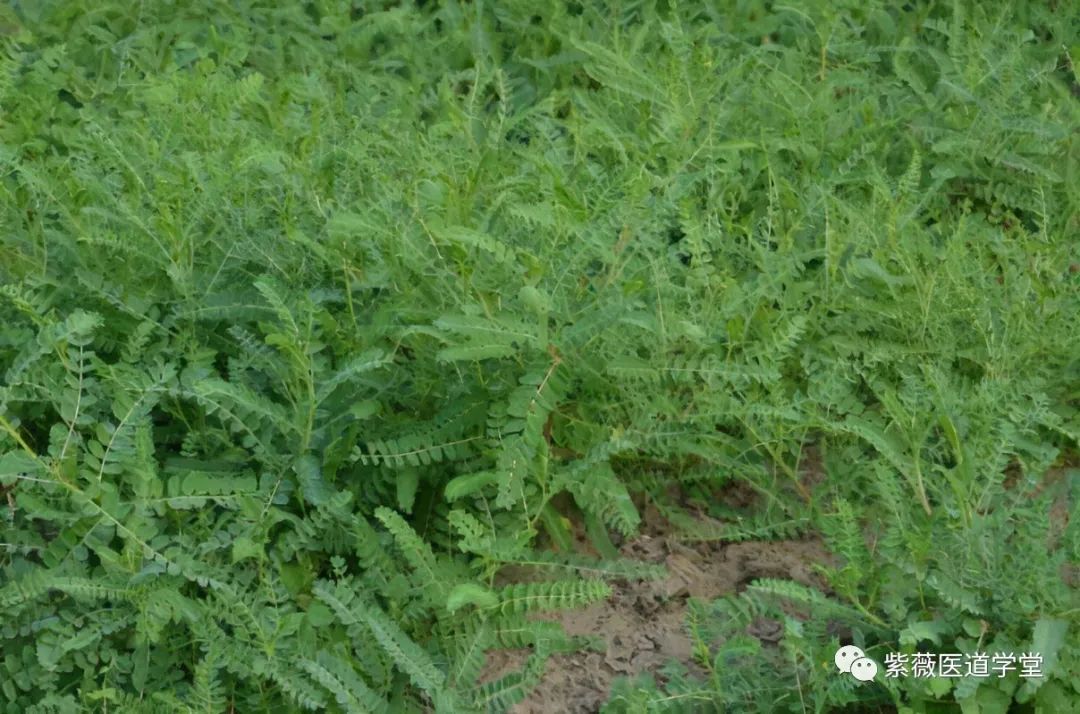
Note:Please follow medical advice for specific treatments and medications!This article is excerpted from Lin Zheng Ben Cao, authored by Tao Yu Feng, published by the People’s Health Publishing House, March 2005. This public account is used for academic exchange only; if there is any infringement, please contact for deletion, and please indicate the source when reprinting.

